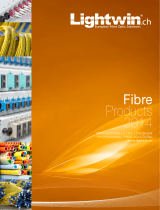
APC Bedienungsanleitung
1. Produktbeschreibung.
Albrecht Precision Chuck (APC) ist ein hochpräzises Spannfutter mit Spanngetriebe für höchste
Spannkraft, Rundlaufgenauigkeit und beste Dämpfungseigenschaft zum Spannen von Werkzeugen mit Zylinderschäften zur
spanenden Bearbeitung (Fräsen, Bohren, Reiben, Gewindeschneiden, Schwerzerspanung, Schlichten, HSC-Bearbeitung).
Die Spannung der Werkzeuge erfolgt mittels Spannhülse. Das APC wird seitlich mit einem Sechskantschlüssel bedient.
2. Die Gewährleistung für APC-Produkte beträgt 12 Monate ab Lieferdatum Werk bei bestimmungsgemäßen Gebrauch.
Ausgeschlossen sind Verschleißteile wie Schnecke und Dichtungselemente.
3. Bestimmungsgemäßer Gebrauch. Albrecht APC Spannfutter ist speziell entwickelt zum Spannen von rotations-
symmetrischen Werkzeugen mit Zylinderschäften. Verwendbare Schafttypen: DIN 1835 B, E und DIN 6535 HB, HE
mit Schaft-ø Toleranz h6. Das Produkt darf nur im Rahmen der in den technischen Daten definierten Grenzen eingesetzt
werden. Siehe S. 9. Die vom Hersteller vorgeschriebenen Betriebs-, Montage-, und Wartungsbedingungen sind
einzuhalten. Das Spannen von Werkzeugen und das Einbringen des APC-Futters in die DIN-Aufnahme der
Maschinenschnittstelle nur von unterwiesenem und geschultem Personal unter Beachtung der Betriebsanleitung und
unter Einhaltung des maximal zulässigen Werkzeuggewichts durchführen lassen. Ohne schriftliche Genehmigung der
Albrecht Präzision GmbH & Co. KG dürfen weder zusätzliche Bohrungen, Gewinde oder Anbauten noch Modifikationen
am Produkt vorgenommen werden. Bei langen, auskragenden oder schweren Werkzeugen und bei Verwendung von
Verlängerungen ist die max. zulässige Drehzahl zu reduzieren, ggf. sind Angaben bei Sonderkonstruktionen zu
berücksichtigen. Bei Nichtbeachtung der Mindesteinspanntiefe können Beschädigungen und Genauigkeitsverlust die
Folge sein. Bei Verwendung von Kühlschmiermitteln sind die Herstellerangaben zu beachten um Korrosion bzw.
Rückstände im Spannfutter zu vermeiden.
4. Sicherheitshinweise.
VORSICHT: Beim Einsatz unter Rotation müssen Schutzabdeckungen gemäß EG- Maschinenrichtlinie 2006/42/EG
Punkt 1.4.2.2. B vorgesehen werden. Sonst besteht Verletzungsgefahr.
VORSICHT: Beim Wechseln von Werkzeugen besteht Verletzungsgefahr durch scharfe Kanten und Konturen.
Die Verwendung von geeigneten Schutzhandschuhen wird empfohlen.
VORSICHT: Bei Nichteinhaltung der Mindesteinspanntiefe droht Bruchgefahr
(Verletzungsgefahr durch herausschleudernde Teile).
ACHTUNG: Halten Sie das Werkzeug beim Lösen der Werkzeugspannung gut fest, damit es nicht herunterfällt
und dadurch Werkzeug und Werkstück beschädigt werden.
ACHTUNG: Bei nachfolgenden Artikeln entspricht die Kontur vor der Greiferrille (Safety Zone) nicht der Norm!
Dies kann bei einzelnen Maschinen zur Kollision beim automatischen Werkzeugwechsel führen.
DIN 69871 SK40: 300 025Z 240 0
ANSI B5.50 CAT40: 300 014Z 540 0; 300 914Z 540 0; 300 020Z 540 0; 300 025Z 540 0; 300 520Z 540;
300 920Z 540
5. Einsetzen der Spannhülse. Zunächst den Innenkonus des APC reinigen, (Empfehlung: APC-Innenkonuswischer
verwenden). Gereinigte Spannhülse mit dem Werkzeug von Hand in das Futter einschrauben bis die Spannhülse am
Konus anliegt. Für maximale Spannkräfte empfehlen wir ein Entfetten von Werkzeugschaft, Bohrung und Konus der
Spannhülse und Innenkonus APC.
6. Spannen. Spannschlüssel ganz
einführen, nur original Albrecht
Spannschlüssel verwenden. Sechs-
kantflächen auf Beschädigungen
prüfen!
Der Spannvorgang wird mit dem
Spannschlüssel seitlich am APC
durch
Drehen im Uhrzeigersinn eingeleitet – max.
Anzugsmoment, siehe Beschriftung auf
dem APC.
Nur folgende Albrecht Spannschlüssel verwenden: Art.Nr. 139 0010 900 0: Drehmomentschlüssel 10Nm,
Art.-Nr. 139 0020 900 0: einstellbarer Drehmomentschlüssel, Art. Nr. 139 0000 905 0: Standard- Spannschlüssel mit Anzeige
max. 10Nm, Zum Spannen die zwei Pfeilspitzen zur Überdeckung bringen.
7. Lösen. Das Lösen des APC erfolgt durch Drehen des Sechskantschlüssels
entgegen dem Uhrzeigersinn. Dabei ist das Überwinden von zwei Widerständen
typisch. Zunächst wird das Gewindereibmoment überwunden, danach wird die
Spannhülse abgedrückt. Dann soweit lösen, dass das Werkzeug entnommen
werden bzw. die Spannhülse von Hand herausgedreht werden kann.
8. Längenanschlag. Die Längenanschlagschraube der Spannhülse kann mit
einem Sechskantschlüssel SW4 bedient und im gelösten Zustand von hinten
durch das APC-Spannfutter justiert werden. (Werkzeug ungespannt).
Bei Steilkegel-Aufnahmen (Form AD) ist dazu ein durchbohrter Anzugbolzen
erforderlich. Der Längeneinstellweg beträgt 11mm.
9. Technische
Daten
APC Typ
Spanndurchmesser,
Ø-Toleranz h6
Ø mm / Ø zoll
Min.
Einspann-
tiefe
Max.
Einspann-
tiefe
Film zur Bedienung hier:
APC14/
APC20
2 - 5
1/8“ - 3/16“
17
66
6
1/4“
22
40
7 - 10
5/16“- 3/8“
30
50
11 - 15
7/16“ - 9/16“
38
50
APC20
16 - 20
5/8“ - 3/4“
38
48,5
APC25
12,7
1/2“
47
54,5
16-32
5/8“- 1 1/4“
47
60
Max. Betriebsdrehzahl s. Beschriftung am Produkt, Max. Betriebstemperaturbereich: 10-110°C; Max. Kühlmitteldruck: 100 bar
10. Wuchtgüte.
Ein Albrecht APC ist ohne Spannhülse und Werkzeug gemäss Beschriftung feingewuchtet. Höhere Wucht-
güte u. Drehzahl auf Anfrage. Wuchtgüte wird bei Verwendung von Werkzeugschäften mit Ausnehmungen beeinträchtigt.
11. Wartung.
Das Präzisions-Spannfutter APC ist bezogen auf den Produktlebenszyklus wartungsfrei. Nach Verwendung ist das APC-
Futter insbesondere am Innenkonus und die Spannhülse samt Spannhülsengewinde mit einem
lösemittelhaltigen Reiniger zu säubern. Die Reinigungsintervalle sind dem Verschmutzungsgrad und den Umgebungs-
bedingungen anzupassen. Nach dem Reinigen ist das APC-Futter mit einem geeigneten Korrosionsschutz zu versehen.
12. Reparaturen. Um die Funktion und die Genauigkeit zu gewährleisten, dürfen Reparaturen ausschließlich vom
Hersteller oder autorisierten Werksvertretungen durchgeführt werden. Nach einem Werkzeugbruch empfehlen wir
APC-Futter-und Spannhülse auf Rundlauffehler und Haltemoment zu überprüfen.
Albrecht Präzision GmbH & Co. KG, Antoniusstr. 25, 73249 Wernau, Deutschland
Tel: +49 (0) 71 53-30 06-0, info@albrecht-germany.com, www.albrecht-germany.com
Rev. 13. 02. 2018

APC Manual
1. Product description. The Albrecht Precision Chuck (APC) is a high precision toolholder with clamping gear. Its
unique design provides a very high clamping force, run-out accuracy as well as a positive dampening feature for
machining (milling, drilling, reaming, tapping, heavy-duty cutting, finish milling, HSC operations). The APC uses a
special collet to clamp the cutting tool and is operated by a hex key on the periphery.
2. Warranty period for APC-products is 12 months after delivery date ex works assuming intended use.
Wear parts are not a part of the warranty (worm, sealing elements).
3. Intended use. Albrecht APC chucks are used for clamping of rotationally symmetrical tools with cylindrical shafts.
Applicable shaft types: DIN 1835 B and E and DIN 6535 HB, HE with shaft diameter tolerance of h6. This product
may only by used within the restrictions of its technical specifications (see chapter 9). Intended use also includes
observation with the conditions the manufacturer has specified for operation, installation and maintenance.
The clamping of tools and the insertion of the APC chuck into a machine spindle with a standardized interface
must only be done by technically trained personnel in accordance with the operation manual. The maximum tool
weight is to follow by the machine manual. For additional bores, threads or attachments which are not offered as
accessories by Albrecht, may be attached only with the written permission of Albrecht. For long, overhang or heavy
tools or extensions, the max. rpm should be reduced, allowances which are laser marked on the tool are to observe.
Failure to comply with the minimum insertion depth of tool there is a risk of fracture and loss of accuracy.
To avoid corrosion, please notice the mixing ration of the coolant according to the manufacturer.
4. Safety instructions.
CAUTION: When used with rotation, protective covers must be provided
(According to EG-Maschinenrichtlinie 2006/42/EG point 1.4.2.2. B). Not doing so could result in serious injury.
CAUTION:
When changing tools it may result in serious injury because of sharp edges and contours (wear suitable gloves).
CAUTION: lure to comply with the minimum insertion depth of tool there is a risk of fracture and loss of accuracy.
ATTENTION: When untighten the tool, please be ensure to hold the tool tight that it does not fall down
and thereby the tool and workpiece damage.
ATTENTION: The following tools have no safety-zone (not ISO conform).
Be sure to check for tool changer interference before using.
DIN 69871 SK40: 300 025Z 240 0
ANSI B5.50 CAT40: 300 014Z 540 0; 300 914Z 540 0; 300 020Z 540 0; 300 025Z 540 0; 300 520Z 540;
300 920Z 540
5. Inserting the collet. Clean the inner taper of the APC (Recommending: APC taper wiper). Manually screw the clean
collet with the tool into the chuck until the collet connects with the taper. In order to achieve max. clamping forces
we recommend to degrease tool shank, inner and outer collet cone as well as the inner-cone of the APC.
6. Clamping. Put in the hex key as far
as possible. Use only the original
Albrecht hex key. Hex tool surface is to
be inspected about damages! The
chucking procedure starts by engaging the
screw on the side of the APC and rotating
the hex key clockwise. Max. clamping
torque see product-marking. Use only
following Albrecht keys: Ref.no.
139 0010 900 0
: torque key 88,5 in-lbs., Ref.no.139 0020 900 0: adaptable torque key,
Ref.no.139 0000 905 0: standard clamping key with scale (max. 88,5 in-lbs. For a clamping - match the two
arrowheads.
7. Releasing. Open the APC by turning the hex key counter-clockwise.
Note: when opening the APC you must overcome two resistance points.
First, you will overcome the friction torque and then the collet is loosened.
Then open until the tool can be taken out, respectively the collet can be
unscrewed manually.
8. Adjust End-Stop. A length stop screw is located in the collet and
can be adjusted with a hex key (size 5/32 hex). For operation from
the back through the APC chuck with taper shank a bolt with a through
hole is necessary (form AD). The range of the length adjustment: 11mm.
9. Technical Data
APC Typ
Clamping Diameter,
Ø-tol. h6
Ø mm / Ø inch
Min.
Clamping
depth
Max.
Clamping
depth
Watch movie about the handling:
APC14/
APC20
2 - 5
1/8“ - 3/16“
17
66
6
1/4“
22
40
7 - 10
5/16“- 3/8“
30
50
11 - 15
7/16“ -
9/16“
38
50
APC20
16 - 20
5/8“ - 3/4“
38
48,5
APC25
12,7
1/2“
47
54,5
16-32
5/8“- 1 1/4“
47
60
Max. r.p.m. see product-marking. Max. operation temperature: 10-110°C (max. 230°F); Max. coolant pressure: 100 bar (1450 lb/in²)
10. Balancing grade. Each Albrecht APC is fine-balanced without collet and tool according to the laser marking
Higher balancing quality and rpm on request. The use of shanks with recesses influences the balancing
grade and run-out
accuracy of the whole system.
11. Maintenance. The Precision Chuck APC is maintenance free over his lifetime. Clean APC (especially the inner cone)
and collet including thread after usage with a solvent base cleaner. According to contamination the cleaning cycles have
to be adjusted. After cleaning, apply a thin coat of anticorrosive.
12. Repairs. In order to guarantee the precision of the tool, any APC in need of repair has to be sent to the manufacturer
or to an authorized national agent only. We recommend checking the chuck and the collet for run-out deviations and
gripping torque periodic, especially after a tool break or crash.
Albrecht Präzision GmbH & Co. KG, Antoniusstr. 25, 73249 Wernau, Germany
Tel: +49 (0) 71 53-30 06-0, info@albrecht-germany.com, www.albrecht-germany.com
-
 1
1
-
 2
2
in anderen Sprachen
- English: Albrecht APC14 User manual
Verwandte Artikel
Andere Dokumente
-
Akai APC20 Bedienungsanleitung
-
 Triotronik PRETERM 8E09 E2/APC-E2/APC 10.0M Benutzerhandbuch
Triotronik PRETERM 8E09 E2/APC-E2/APC 10.0M Benutzerhandbuch
-
 Triotronik LKUP FC-SC MM Datenblatt
Triotronik LKUP FC-SC MM Datenblatt
-
Greenlee Minifibre Tools Benutzerhandbuch
-
MULTIPLEX Gemini 21 4224 Bedienungsanleitung
-
APC BACK-UPS RS 800 Benutzerhandbuch
-
MULTIPLEX Multicont Car Mc X Bedienungsanleitung



